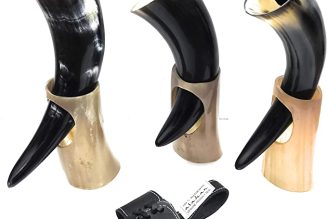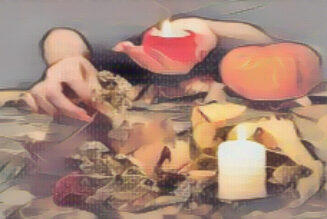One of the most ancient forms of divination is crystallomancy or catoptromancy, performed with a magic mirror. The Magi of Persia are said to have used mirrors, as well as the ancient Greeks and Romans. In ancient Greece, the witches of Thessaly wrote their oracles in human blood upon mirrors. The Thessalian witches are supposed to have taught Pythagoras how to divine by holding a magic mirror up to the Moon. Romans who were skilled in mirror reading were called specularii. In lore, mirrors are believed to reflect the soul and must be guarded against lest the soul be lost. These fears carry over into superstitious customs, such as covering the mirrors in a house after death to prevent the souls of the living from being carried off by the ghost of the newly departed; and removing mirrors from a sick room because the soul is more vulnerable in times of illness . According to another superstition, if one looks into a mirror at night, one will see the Devil. In Russian folklore, mirrors are the invention of the Devil, having the power to draw souls out of bodies. The Aztecs used mirrorlike surfaces to keep witches away. A bowl of water with a knife in it was placed in the entrances of homes. A witch looking into it would see her soul pierced by the knife, and flee. According to another belief, witches have no souls, and therefore, like vampires, have no reflections in mirrors. Medieval and Renaissance magicians often used mirrors, bowls of water, polished stones and crystals for divination, to see the past, present and future. Village wizards frequently employed mirrors to detect thieves. Whatever the purpose, the magicians would stare into the polished surface until they hypnotized themselves into light trances and saw visions that answered the questions that were put to them. John Dee, England’s royal court magician in the 16th century, employed both a crystal egg and a mirror made of polished black obsidian, reportedly taken from Mexico by Cortés. Cagliostro used mirrors, as did the famous 16th-century occultist Agrippa. According to one legend, Cartaphilus, the Wandering Jew, asked Agrippa in 1525 to produce a vision of his dead childhood sweetheart in his mirror. Agrippa asked the man to count off the decades since the girl had died, and waved his magic wand at each count. Cartaphilus kept counting far beyond the girl’s death. At 149, Agrippa felt dizzy but told him to keep counting. Finally, at 1,150, a vision appeared of the girl in ancient Palestine. Cartaphilus called out to her—in disobedience to Agrippa’s admonitions—and the vision dissolved. Cartaphilus fainted. Later, he told Agrippa he was the Jew who had struck Christ as he carried the cross and was condemned to wander the earth. European royalty believed in and used magic mirrors. Catherine de’ Medici, a devout believer in the occult arts, had a mirror that revealed to her the future of France. Henri IV also relied on a magic mirror to discover political plots against him. The medieval magician Albertus Magnus recorded formula for making a magic mirror: Buy a looking glass and inscribe upon it “S. Solam S. Tattler S. Echogordner Gematur.” Bury it at a crossroads during an uneven hour. On the third day, go to the spot at the same hour and dig it up—but do not be the first person to gaze into the mirror. In fact, said Magnus, it is best to let a dog or a cat take the first look.
Mirror Divination
782 views






















